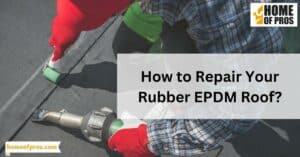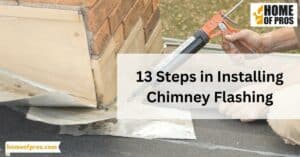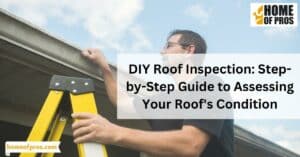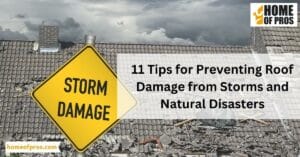Roof moss not only detracts from your home’s curb appeal but also has the potential to shorten the lifespan of your roof. Fortunately, there are effective methods available to both eliminate existing roof moss and prevent future growth.
To eliminate roof moss, practice prevention by regularly cleaning gutters and debris, trimming overhanging branches, and installing zinc or copper strips. Also, inspect your roof routinely for early detection of growth and use a pressure washer or moss-removing chemicals to remove stubborn moss. This consistent upkeep will ensure a moss-free roof.

Moss-Removal Products and DIY Solutions
Let’s talk solutions. When it comes to dealing with pesky roof moss, prevention is indeed better than cure. This section explores a range of moss-removal products and do-it-yourself solutions, all aimed at keeping your roof clean, clear, and moss-free.
From trimming overhanging branches and keeping gutters debris-free to utilizing zinc strips, we’ve got you covered.
What You’ll Need
To remove moss from your roof, you will need a few basic tools and supplies:
- Protective gear such as gloves and eyewear
- A ladder or step stool to reach the roof safely
- Pitchforks or other garden tools for scraping
- A leaf blower or a shop vac for removing debris
- Zinc strips, flashing, or other moss-inhibiting materials
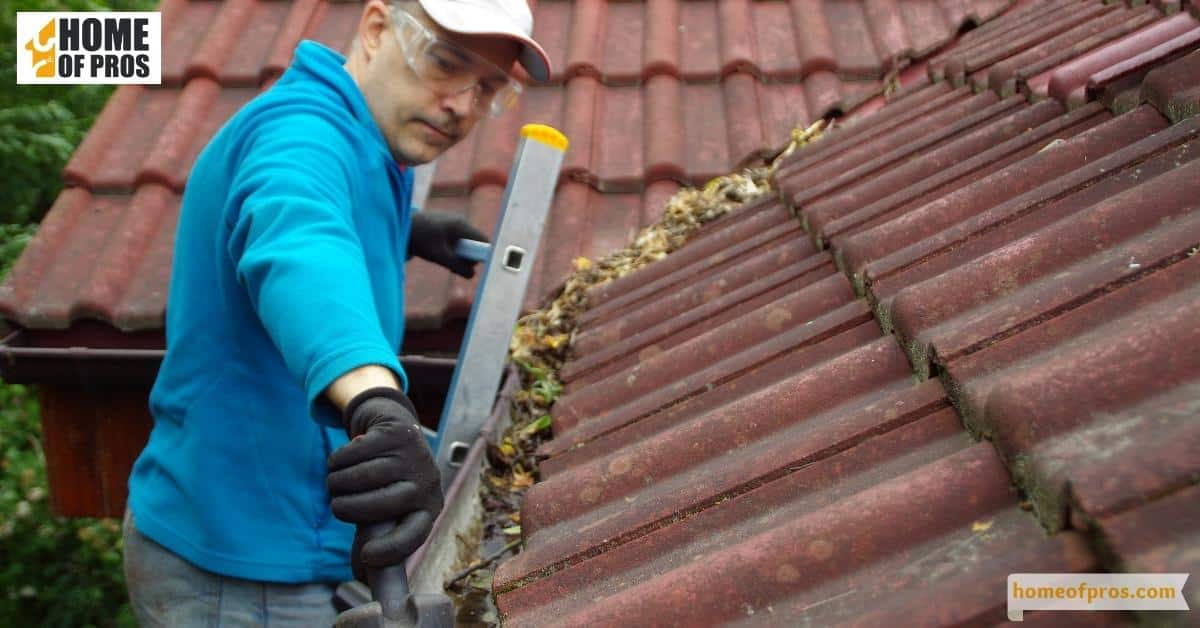
Equipment / Tools
To start, you will need some basic equipment to get the job done. Make sure you have safety gear such as gloves and eyewear, and that your ladder or step stool is tall enough to reach the roof safely.
You should also have pitchforks or other garden tools for scraping, a leaf blower or shop vac for removing debris, as well as zinc strips, flashing, or other moss-inhibiting materials for the job.
It’s also a good idea to have a pressure washer on hand for cleaning off debris that accumulates over time. Plus, having a telescoping spray nozzle attachment makes this process much easier.

Materials
For materials, you’ll want to pick up some zinc strips or other moss-inhibiting products such as flashing, which can be found in hardware stores. If you’re looking for the best long-term solution to keep your roof free of moss, these are certainly worth investing in.

Step-by-Step Guide for Moss Removal
By following these steps, you can effectively maintain a clean, moss-free roof for your home. Remember, prevention is key in this process, so don’t wait for moss to start growing before taking action.
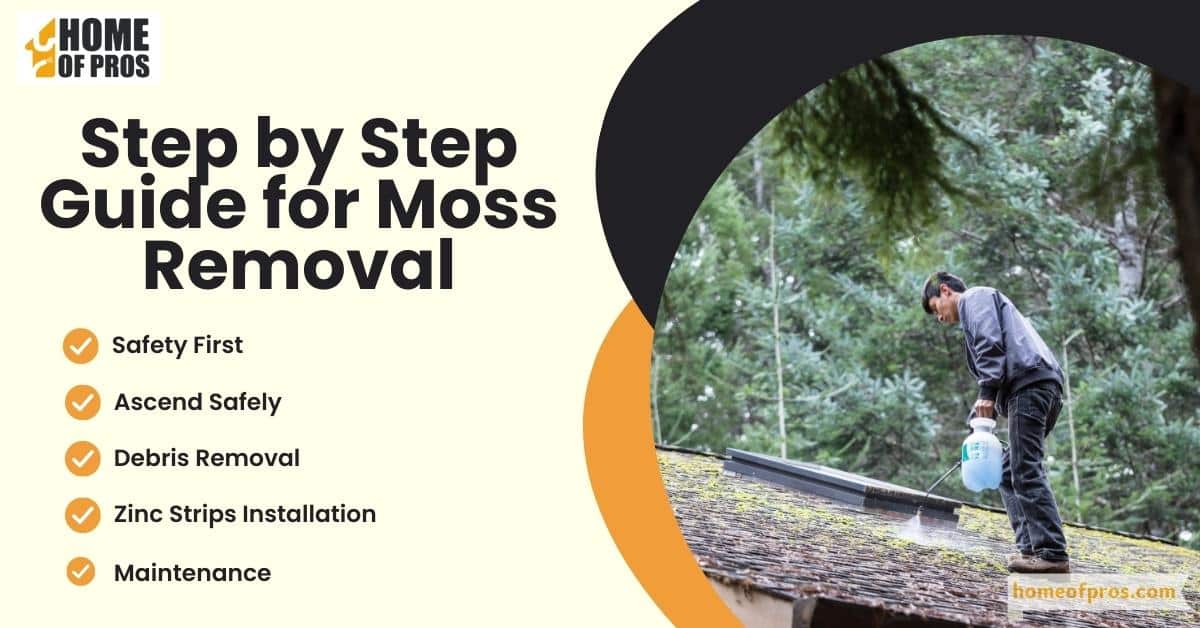
- Safety First: Begin by equipping yourself with your safety gear. This includes gloves, eyewear, and sturdy shoes to prevent slips and falls.
- Ascend Safely: Use a ladder or step stool, making sure it is stable and secure before climbing to the roof.
- Debris Removal: Using your garden tools, gently scrape off any loose moss, leaves, branches, and other debris. Try not to damage the roof tiles or shingles in the process. Use a leaf blower or shop vac to remove the smaller bits of debris.
- Zinc Strips Installation: Position the zinc strips or flashing just below the peak of your roof or under the ridge caps. Make sure they’re secure so they won’t come loose in strong winds or heavy rain.
- Maintenance: After the installation, remember to check the roof regularly for moss growth. If you see any moss starting to form, it may be time for another application of zinc strips or another round of cleaning.
How to Remove Moss from Roof Tiles
Dealing with moss on roof tiles can be quite a challenge, but with the right approach, it’s a task that homeowners can confidently tackle. This process not only enhances the aesthetic appeal of your home but also extends the lifespan of your roof. Let’s delve into the process and empower you with the knowledge to keep your roof moss-free.
1. Prep Space
Before you start, make sure you have all the necessary safety gear such as gloves, eyewear, and non-slip shoes. Also, position your ladder or step stool in a secure spot and ensure that it is stable before climbing to the roof.
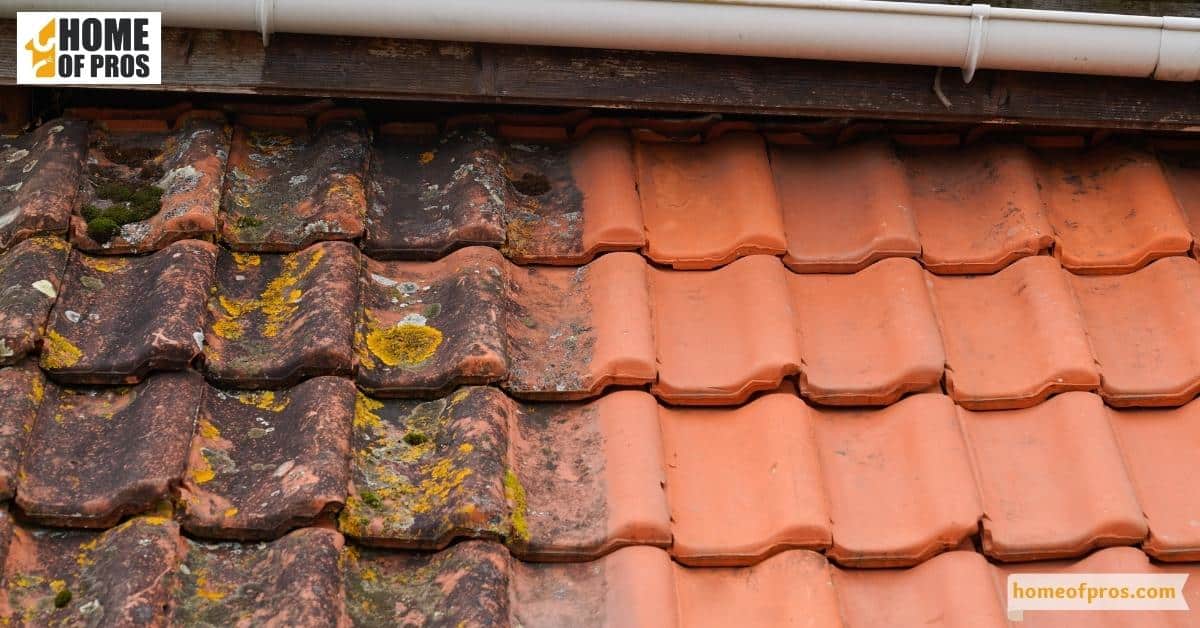
2. Clear Debris
Once you’re safely up on the roof, begin by clearing any debris that has accumulated over time. This includes leaves, branches, seedpods, and any other items that could trap moisture and encourage moss growth.
Utilize your leaf blower or shop vac to make this process more efficient. Remember, the goal here is to create a moss-hostile environment by reducing places on the roof where moisture can accumulate and moss can flourish.
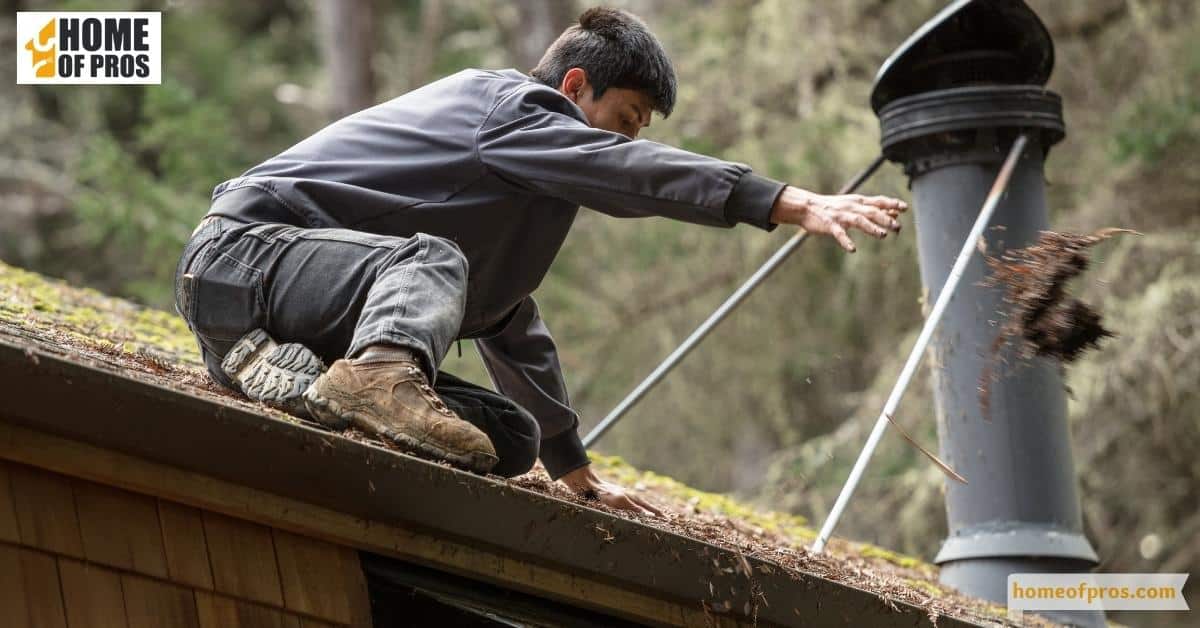
3. Spray the Roof with Water
Once you’ve removed all debris, you can begin removing the moss. Make sure to spray your roof with water to dampen the surface before scraping off the moss. This will make it easier to remove and also helps prevent damage to your shingles or tiles.
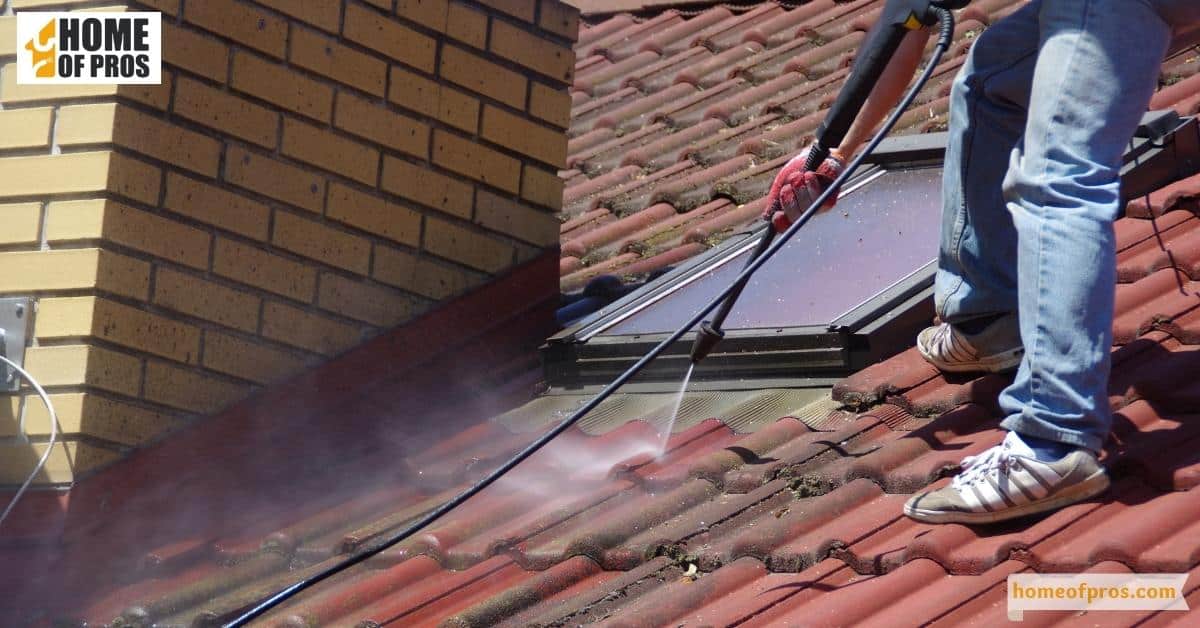
4. Scrub the Shingles
Gently scrub off the moss using a brush or garden tool. If you’re dealing with stubborn patches, you may need to use a pressure washer and/or chemical agents that are designed for moss removal. Make sure to read and follow all instructions on the product label carefully.
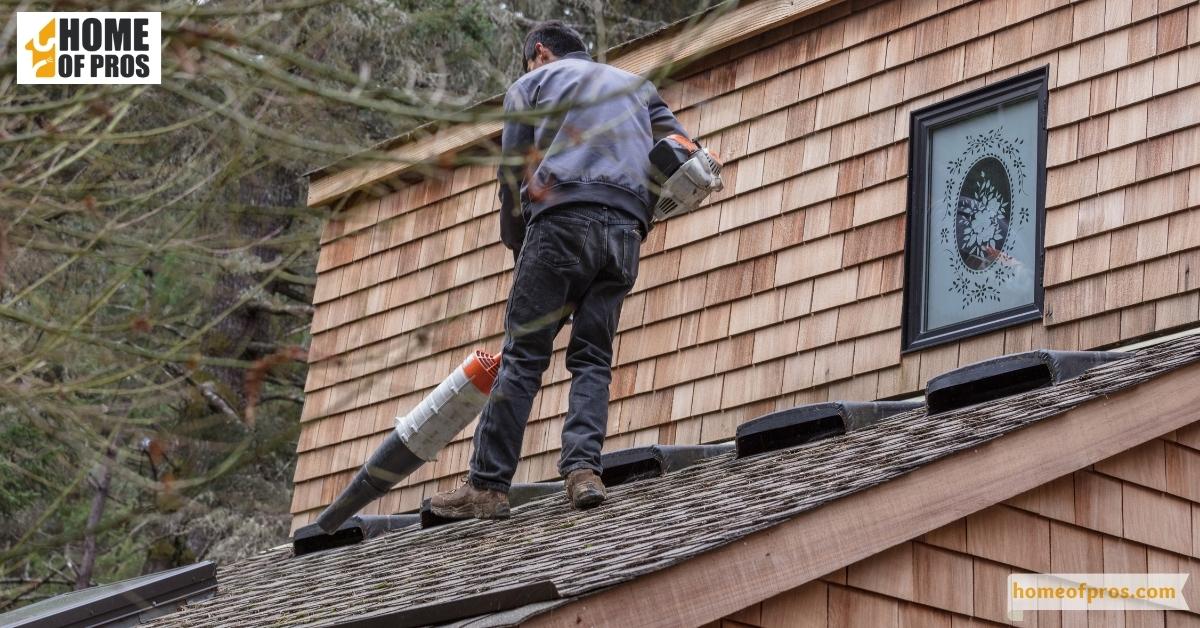
5. Apply Moss Remover
Once you have scrubbed off the moss, it’s time to apply a moss-remover product. This will prevent existing moss from regrowing and also help inhibit any new growth. Make sure to follow all instructions on the label and re-apply as needed.

6. Rinse the Roof
Once you’ve finished applying the moss-remover product, rinse off any remaining residue with water. This will help ensure that the product is not left on your roof and that it won’t damage or discolor your shingles.
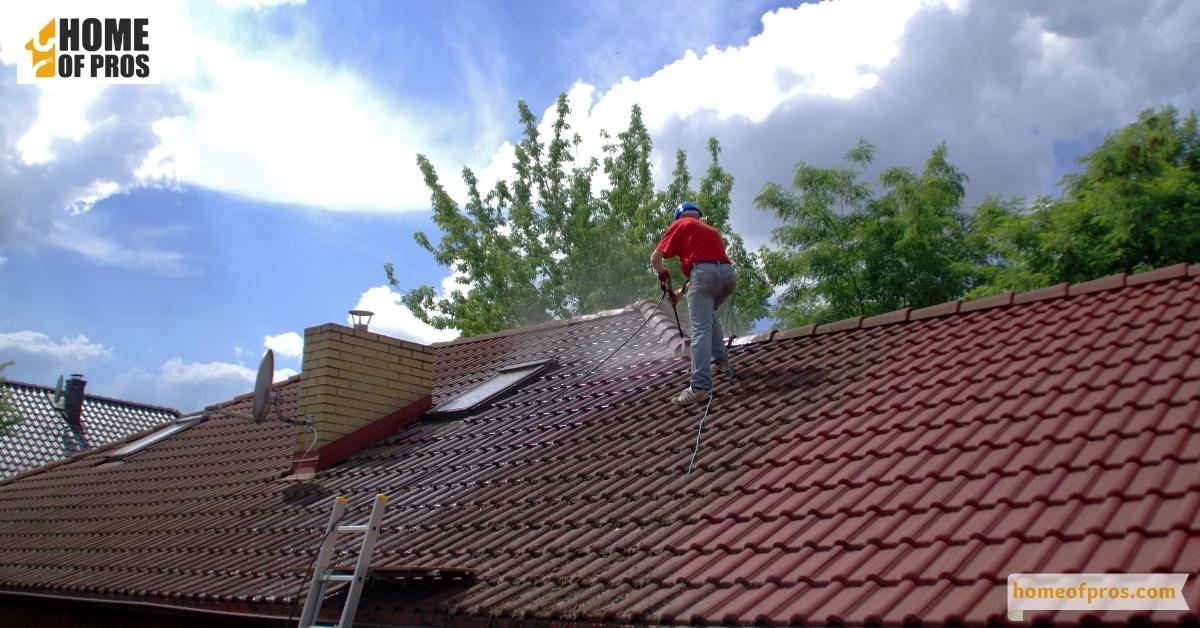
7. Power-Wash Roof (Optional)
For an extra measure of protection, consider power-washing your roof. This helps remove any remaining moss and debris that may have been left behind. Make sure to use a telescoping spray nozzle attachment for optimal results.
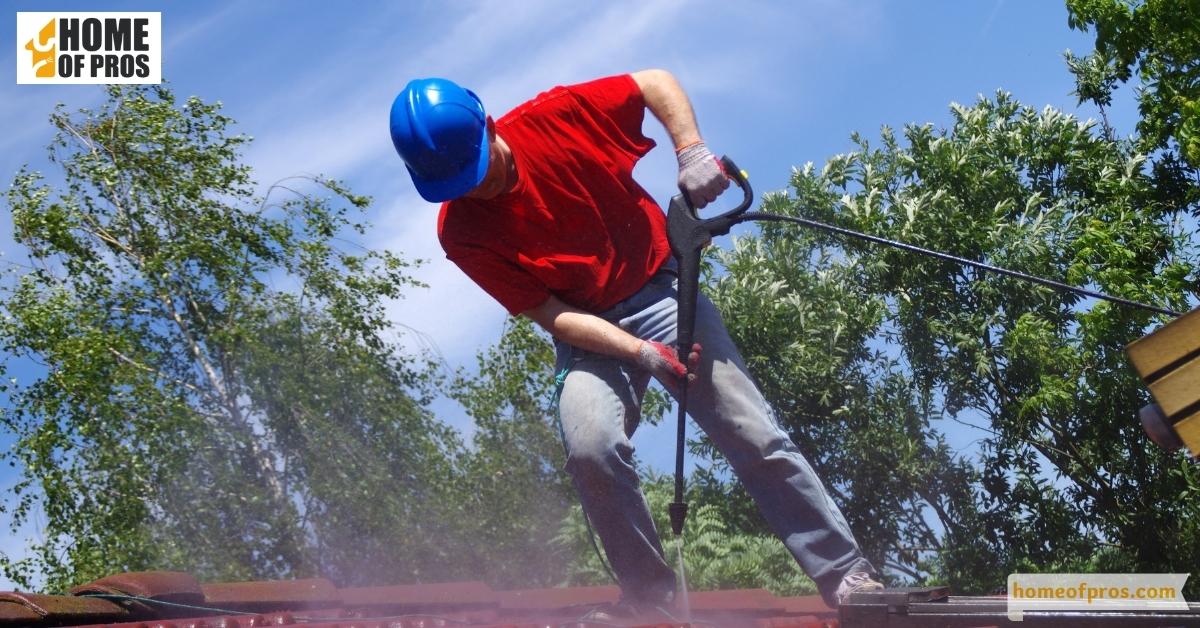
How to Prevent Moss on Your Roof
Moss may give your house a touch of fairytale charm, but it’s less enchanting when it threatens the lifespan of your roof. In this section, we’ll discuss several strategies to prevent the growth of moss on your roof. Let’s demystify the art of moss prevention and guide you toward a clean, moss-free roof.
Preventing moss growth is definitely a more sustainable approach than having to constantly remove it. Here are some measures you can take to keep your roof moss-free:
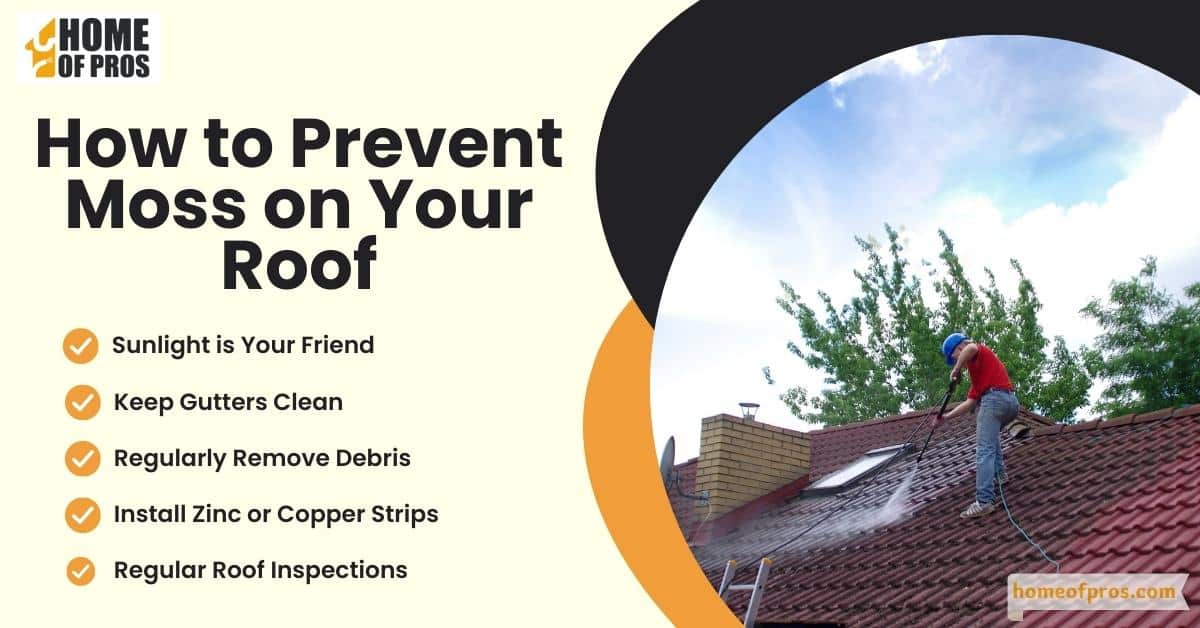
- Sunlight is Your Friend: Moss thrives in damp, shaded areas. Therefore, if you have branches overhanging your roof and creating shade, consider trimming them to let more sunlight reach your roof.
- Keep Gutters Clean: Regularly clean your gutters to prevent water buildup. Moss thrives in moist conditions, so ensuring the roof can properly drain is essential.
- Regularly Remove Debris: Don’t allow leaves, branches, and seedpods to pile up on your roof. Regularly clearing these elements reduces the chances of moss growth.
- Install Zinc or Copper Strips: Consider installing strips of zinc or copper just below the peak of your roof or ridge caps. These metals release particles when it rains that are toxic to moss, preventing its growth.
- Regular Roof Inspections: Regularly inspect your roof for any signs of moss growth. Early detection can make the removal process much easier and prevent further damage.
Remember, prevention is always better than cure. By following these strategies, you can significantly reduce the likelihood of moss proliferating on your roof.
In conclusion
In conclusion, maintaining a moss-free roof is an integral part of home maintenance. While most may give an enchanting aesthetic appeal, it poses serious threats to the lifespan and functionality of your roof. Prevention is undoubtedly the best approach to dealing with this issue. Through regular roof inspections, keeping your gutters clean, trimming overhanging branches, and installing zinc or copper strips, you can effectively keep moss at bay.







